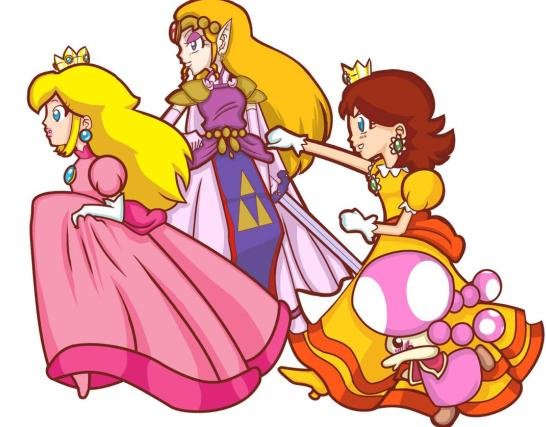This post has not been edited by the GamesBeat staff. Opinions by GamesBeat community writers do not necessarily reflect those of the staff.
Editor’s note: Andrew looks at what happens when Splinter Cell: Conviction’s narrative makes him do something he isn’t comfortable with. (Minor spoilers.) — Demian
Shock value is all about the delivery of the money shot — the instant in a game when you (or your character) do something that leaves you agape in astonishment. Doom’s BFG, the twisted psychological beats of Bioshock, breaking the laws of physics with haphazard disregard in Half-Life 2, or mercilessly slaying civilians in Modern Warfare 2 all qualify.
Whether or not these moments are rooted in narrative or gameplay, or simply grant the player the illusion of breaking previously established rule sets, these instances define the overall experience. A particular scene in Splinter Cell: Conviction really brought that home for me recently…and actually forced me to do something I had no desire to do.
Series star Sam Fisher, having gone rogue following the events of Splinter Cell: Double Agent, is captured and comes face-to-face with the perennial voice in his ear, Grim (Anna Grimsdóttír). She reveals that she’s a mole placed in Third Echelon by the President (why not?), and suddenly things appear significantly more convoluted than they once were. Initially unconcerned, Fisher demands he be released to continue his vengeful search for his daughter’s murderer. However, as Grim unbinds Fisher, I find out he has different motives, and an interrogation scene begins.
Fisher’s previous interrogations in Conviction haven’t been subtle. The memories of recent graphic events rise to the surface as I begin to wonder if the game will ask me to do the same to Grim. A hint of discomfort forms at the base of my stomach. Sam proceeds to wrap his digital fingers around Grim’s neck, and as he takes a chunk of her hair in a clenched fist, I genuinely start to feel alarmed (and surprised) at what the game is asking me to do.
Looking in the lower left-corner of the screen, I see that the circular prompt containing the “B” button on my gamepad has a simple, singular command: hit.
I should note that, having played the previously mentioned titles, I’ve encountered a fair amount of shocking moments in games. The civilian slaughter in Modern Warfare 2’s “No Russian” level may not have been the most pivotal narrative moment within a game in the history of the medium, but it was certainly jarring as an experience.
But Conviction gets a lot more personal. Conviction wants me to get my hands dirty. For a game full of multiple headshot kills, human shields, and countless snapped necks, this part actually gave me pause and made me reflect on what I was being asked to do.
Past experience with the depiction of gender roles in games has conditioned many gamers to believe that female characters are for saving, not physically assaulting. Countless times players risked digitized life and limb simply for nothing more than a kiss, or gracious thanks in the form of scrolling dialogue text. It’s a recurrent modus operandi since Mario first discovered that his princess was, in fact, in another castle — and that made what Conviction insisted I do all the more disquieting.
Game or not, though, Conviction proffered a scenario where I was not only expected, but obliged to hit a female character for the sake of story progression. Sam Fisher is no knight in shining armor; rather, a black knight on a hunt for retribution. Few other moments in the series are so evocative.

Rather than give in, I sought an alternative. I tried every button on my Xbox 360 controller, but the characters on-screen did nothing, the moment frozen in pixilated moral purgatory. I considered shutting the game off as I questioned if hitting a woman, albeit a digital one, was appropriate with my conscience. Weighing limited options, the end result seemed inevitable.
I hesitantly pressed the B button and watched as Fisher began to beat the living crap out of Grim. Taking place not once, but several times, Conviction asked me to beat the answers Fisher wanted out of the woman. Lacking any sort of alternative, I despondently did. Having done so, the game allowed me to progress onwards, leaving Grim with her face bleeding and bruised.
I wonder at the narrative purpose behind this sequence — to show how close to the end of his rope Fisher is, or to impress how little he would hesitate to seize revenge? The game breaks the traditional gender roles we’ve come to expect from games, but replaces them with a graphically brutal indulgence that seems like it’s right out of a hardcore spy novel by Tom Clancy.
While shock value is a useful tool for taking players out of their comfort zones, I’m not certain that Conviction’s approach is really appropriate or necessary. I’ve played games for as long as I can remember, and ultraviolent gore is not a foreign concept to me. But by placing Fisher’s interrogation of Grim in my hands as the player as opposed to in a cinematic, it carried a significantly heavier weight — one I didn’t necessarily want to bear. Nevertheless, as a gamer who has rescued princesses from their castles countless times, Splinter Cell: Conviction pushed me out of my comfort zone with a momentous force that resonated far beyond simple gameplay.
